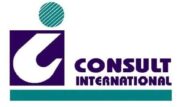C-Suite´s Agile Strategy
The Agile Organization and the Agile Leader
By Alejandro A Jaramillo
During my last thirty years as a management consultant, university professor, entrepreneur, and executive, I had the opportunity to teach and practice the most valuable managerial tools available to companies worldwide. Strategy theories offered models that helped to formulate strategy, but day-to-day problems, uncertainty about the future, operational needs, power fighting, etc., make strategy exercises too rigid and distant from managers´ reality.
I finished an MBA Program in a top management school and taught strategy at leading universities in Colombia and Panama, but I found that theory is very distant from the daily needs of companies. Instead of focusing their actions on priorities given by their strategy and their proposed value-added, they spend their time firefighting the daily problems, not incorporating real-time customer and competitor data right away into strategy, and not having the strategy development and feedback present in their corporate meetings at the rhythm and with the clarity required to shape the future.
Given that C-Suite executives’ time is one of the most important assets to organizational effectiveness, It is necessary to lessen their operational load by adopting Agile Strategy and Scrum practices that multiply their time so they can pay more attention to planning, coordinating, and giving and getting feedback from scrum initiatives integrated at the organizational level. They need to better balance the capability to resolve today’s problems with innovations that feed future strategy outcomes.
Agile tools support C-Suite managers to solve problems in such a way that firms keep their strategy focused, prioritize actions, keep cadence in execution, enforce discipline, and promote autonomous and collaborative teams. Scrum sprints are important to speed up strategy execution, however, if companies do not have an Agile Corporate System to integrate scrum initiatives at the strategic level there will be a risk of doing many sprints that are not aligned with strategy, and without the organizational impact searched.
Both agile organizations and agile leaders are necessary to achieve an agile strategy. Agile organizations are based on structures, systems, and cultures that respond efficiently to operational needs as well as to the value creation requested by the strategy. Agile leaders reinforce the agile culture by developing new capabilities that create a balance between day-to-day issues and future outcomes. Agile leaders grow every day, let others grow, and drive organizational change according to strategy.
